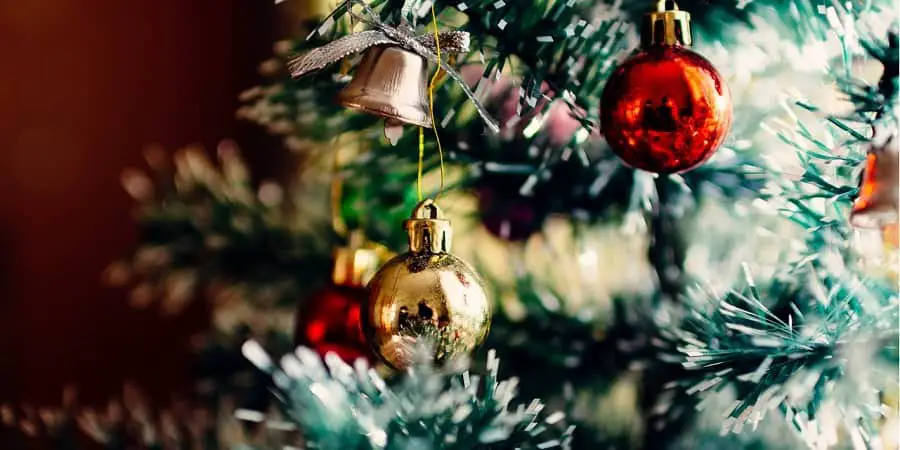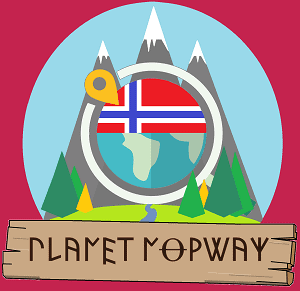Christmas is my favorite holiday in Norway. The combination of the food, the Norwegian weather, and the decorations make it a really cozy, yet festive season.
A typical Norwegian Christmas is a family holiday. While every family has its own traditions, the main event is Christmas eve, on which they gather for a traditional Christmas meal, after which there is an exchange and opening of Christmas presents.
The remaining days of the holiday are typically spent visiting family and friends for parties with lots of Christmas food. Apart from the food, there are many other traditions as well as decorations that contribute to the holiday spirit. Continue reading to explore what makes the Norwegian Christmas celebration so special

History
Like in other countries celebrating Christmas, the celebration is attributed to the birth of Jesus. However, in Norway and other northern European nations of old germanic ancestry, Christmas is simply a Christianised reformulation of the ancient celebration of Yule/Yuletide.
Yuletide was traditionally celebrated for eleven days after the December solstice. Scholars have connected the original celebrations of Yuletide to the Wild Hunt, the god Odin, and the pagan Anglo-Saxon Mōdraniht.
According to the saga of Haakon the Good (Heimskringla). He was a devout Christian who is credited with the Christianisation of Norway, as well as being the one who rescheduled Yuletide to coincide with Christian celebrations held at the time.
Interestingly, certain traditions and customs practiced during yuletide celebrations are still practiced in Christmas celebrations in Norway today. Most prominently having yule ham (Christmas ham) and decorating with yule goats made out of straw.
Also, Christmas in Norway is known as Jul or juletiden (meaning Christmas and Christmas time) which is very similar to Yule and Yuletide.
Before Christmas
The period before Christmas is known as advent. It commences on the fourth Sunday before Christmas and ends on Christmas day. Traditionally it is a time of expectant waiting and preparation for both the celebration of the Nativity of Jesus at Christmas.
While advent is practiced differently in each family, most families stick with the traditions of keeping an Advent calendar and lighting an Advent wreath.
Another tradition practiced before Christmas is the celebration of st. Lucy’s day. While most commonly practiced in the catholic church and Italy, it is also celebrated in Scandinavia. St Lucy’s day is a feast day held on the 13. December in honor of st. Lucy died as a martyr in Sicily around 310 AD.
In Norway, it is most commonly celebrated in kindergartens and primary schools where the children dress up in white robes and march through the school, singing songs and carrying candles. The march is led by Santa Lucia (St. Lucy) who has a wreath of candles on her head. The children also carry and hand out saffron buns.
While the day varies, most families collect and place a pine tree in their living room which is then decorated with lights and other Christmas decorations to become a Christmas tree.
The day before christmas (Lille julaften)
While the day before Christmas does not carry any religious significance, the 23rd of December has become known as “little Christmas eve”, Lille Julaften in Norwegian. While not practiced by every family, it is commonly a day when everyone meets to make the final preparations before Christmas Eve.
One of the most popular customs of Lille julaften is to prepare a meal of rice porridge containing a single, hidden almond. The person who is lucky enough to get the almond wins a price, most commonly a marzipan pig.
In addition, it has become something of a tradition to watch the annual broadcast of “Dinner for One” (aka The 90th Birthday), an old English comedy sketch originally written in the 1920s that remains relatively unknown in the UK.
Christmas day
While many are off on Christmas day, stores are open before noon and in the early afternoon. While many go to the Christmas church service around noon, many spend the time making the final preparations for the holiday.
By 5 pm, most stores have closed and the bells ring, signalizing that Christmas has started. Families then gather for their selected Christmas meal. The dish of choice depends on where in the country you live in.
In the greater Oslo area (Østlandet), it is most common to have Christmas pork ribs (Ribbe), served with medisterkaker (Christmas meatball), Christmas sausage, almond potatoes, brown sauce, and pickled red cabbage. This is the most common Christmas meal.
In western Norway, it is common to eat salted and cured lamb ribs (Pinnekjøtt). While the garnish can vary, it is typically served with swede mash and potatoes as well as a dash of lingonberry jam.
After dinner, the family gathers for coffee and Christmas cakes while exchanging and opening Christmas presents that have been placed under the Christmas tree
25-30 December (Romjulen)
Both the 25th and 26th of December are public holidays in Norway where almost everything is closed. During these days it is common to visit friends and families for Christmas brunch/lunch or dinner.
On one of the days, it is also common for younger people to head into town to meet their friends for a party. While there are some regional differences it is most common to go out on the 26. December
From 27. December, the stores open again, after which people rush out to change the presents that didn’t fit or weren’t quite what they wanted.
Food and drink
While the Ribbe and Pinnekjøtt are the most common Christmas meal on Christmas day, there are some alternatives, as well as other traditional Christmas foods and snacks.
One alternative Christmas day meal is Christmas cod, which is traditionally eaten in southern Norway, but also in parts of northern Norway. The cod is typically served with potatoes, carrots, and melted butter.
Another seafood meal that is common to eat around Christmas time is Lutefisk. This special meal is actually dried white fish (typically cod) which is then pickled in lye. It is typically served with potatoes, mashed peas, and bacon.
As mentioned, one tradition which persists from the heathen yuletide is having Christmas ham. While it’s even more common in Sweden, plenty of families in Norway prepare some sort of Christmas ham which can be served as a main course or prepared in slices to be eaten with bread and other garnish for Christmas lunch and brunch.
Gløgg is the Scandinavian twist on the traditional European mulled wine. The traditional gløgg is an alcoholic beverage made from red wine, spirit (cognac), sugar, and spices (typically cinnamon, cardamom, and cloves).
Today you get both alcoholic and non-alcoholic variants for children which taste great on cold December evenings.
A Norwegian Christmas is not complete without Christmas cakes. Traditionally, one should have 7 different types of Christmas cookies prepared for the holidays. Today, most families settle for less, but the traditional 7 include:
- Goro
- Smultringer (donuts)
- Fattigman
- Berlinerkranser
- Sandkaker
- Krumkakter
- Sirupsnipper
Decorations
Similar to many other countries, it is common with decorations for Christmas celebrations. Towns and cities typically put up lights and pine trees, while families make their own decorations in their gardens and homes.
The staple Christmas decoration in any home is the Christmas tree. It is typically decorated with lights and a single star at the top as well as varying types of decorating items including Christmas bulbs and weaved Christmas baskets.
It is not uncommon for families to change curtains and tablecloths to something with Christmas colors. Also, it is common to put up different types of decorating items throughout the house. This includes common figures such as snowmen, reindeer, and Santa, but also traditional Scandinavian decorations from folklore and yuletide.
Many homes put a goat figure made of straw, a tradition carried on since the old yuletide. Also, it is common to decorate with nisser, which are mythological creatures with an appearance that is something of a mix of a garden gnome with Santa.
Closing remarks
While there are plenty of Christmas dishes, traditions, and decorations left out in this article, it gives you a rough overview of how Christmas is celebrated in Norway. If you have the chance, I highly recommend that you experience one firsthand.
If there are any dishes, traditions, or decorations left out that you think should be included, be sure to let me know. Also, feel free to share any Norwegian Christmas experiences that you might have.
